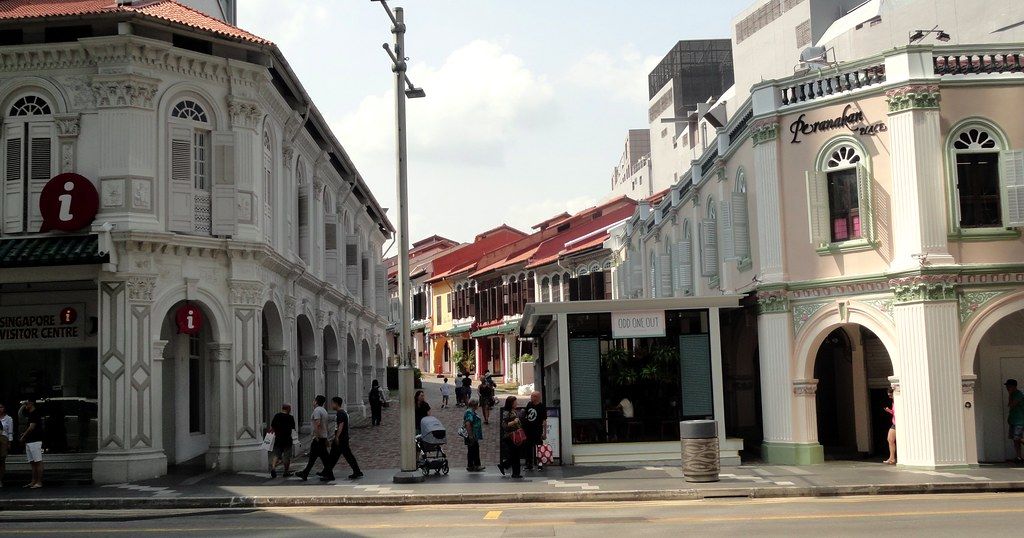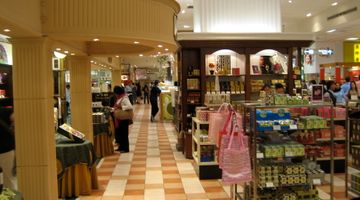Transport in Singapore
Being one of Southeast Asia’s, and the even one of the world’s biggest aviation hubs, Singapore is especially easy to enter via airplane from pretty much anywhere in the world.
Flying to and from Singapore
There are daily direct flights between Singapore and almost anywhere in the world – from Europe to North America to South Africa; from the Middle East to Australia and New Zealand.
Singapore is also a common stopover on the “Kangaroo Route” between Australia and Europe with KLM, British Airways, Etihad Airways, Mann Travel and Emirates.
Singapore-based low-cost carriers such as Tiger Airways, Scoot and Jetstar Asia, Singapore Airlines and Silk Air make travelling around the region easy and affordable.
Touching down or departing from Changi Airport is an all-round pleasurable experience for both locals and visitors alike. Whether you are an excited traveller or whether you are travel-weary, Changi Airport is a well-organized, efficiently run and first class experience for all. State of the art design, remarkably fast immigration and baggage services, and absolutely beautiful, it’s clear to see why this airport has been dubbed, “the airport of the world”.
Singapore’s first airport, Seletar Airport, initially used for civil aviation in 1930 is still in use today but only for general aviation. So unless you have your own aircraft, you’ll never land here.
Via land to and from Malaysia
For those entering from Peninsular Malaysia the best option of entering and leaving Singapore will be via land. Land options include cars, buses or trains.
Overland border crossings between Singapore and Malaysia
Entering overland to and from Malaysia is possible via two land crossings, namely, the Causeway and the Second Link. The Causeway can be crossed by bus, train, taxi or car however traffic congestion especially on Fridays and Sundays is notoriously jam-packed. The Second Link between Tuas in western Singapore and Tanjung Kupang in the western part of Johor is less congested and much faster. This crossing is used by a couple of the luxury bus services to Kuala Lumpur and is especially recommend if driving your own car. Thankfully driving into Malaysia from Singapore is relatively easy despite the small tolls charged for both the Causeway and the Second Link.
Travelling between Singapore and Malaysia by bus
Getting to and from Singapore via Malaysia is also possible by bus. There are plenty of buses plying the route from Kuala Lumpur and other Malaysian destinations through the Woodlands Checkpoint and the Second Link at Tuas.
Making the bus travel between Kuala Lumpur and Singapore a bit of a hassle is the fact that there is no central bus station in Singapore and different companies leave from different destinations.
Major bus operators include the no-frills KKKL which departs from Katong V, Marine Parade, Golden Coach Express which departs from City Plaza and the luxurious first-class option, Transtar, which departs from Golden Mile Complex, Beach Rd, with a more budget friendly Seasons Express also operating from Golden Mile Complex.
The bus fares vary in price from MYR50 to MYR120 (SGD 20-SGD 45), depending on the class of the coach. Most travellers can expect to pay the standard fare of MYR50 or SGD30. As a general rule, the more you pay, the more direct and comfortable your journey will be. The pricier buses are more reliable, use the faster Second Link and don’t stop during the trip. The duration of the bus from Kuala Lumpur to Singapore usually takes around five hours including the time spent at the border crossing.
Travelling between Singapore and Malaysia by train
Train is also an option for travelling to and from Singapore and Malaysia. The Malayan Railway or Keretapi Tanah Melayu manages a shuttle train service between Woodlands Train Checkpoint in Singapore and JB Sentral in Johor Bahru, Malaysia. Despite being less frequent and more costly than the buses, the trains have the advantage of getting you across the Causeway without getting stuck in traffic. They also have their own dedicated immigration and customs check areas which are far less busy than the road checkpoints. The Shuttle Tebrau service completes 14 trips daily from JB Sentral, and 12 trips per day from Woodlands.
Note Unfortunately there is no more direct train between Singapore and Malaysia – now you have to connect via Johor Bahru and Gemas.
Travelling between Singapore and Malaysia by taxi
The final land option in getting between Malaysia and Singapore is by taxi with the primary benefit being that you and your possessions do not need to be dragged through Immigration and Customs on either end, and one can simple stay comfortably seated in the taxi. Only specially licensed taxis are allowed to cross the border and both Singapore-registered and Malaysian-registered taxis are available to complete this journey.
To and from Singapore by boat
Travelling between Singapore and the neighbouring Indonesian province of Riau Islands, as well as Johor, Malaysia, is possible over water.
There are five ferry terminals in Singapore which handle these international journeys, namely, HarbourFront (near Sentosa), Marina Bay Cruise Centre in Marina Bay, Tanah Merah Ferry Terminal on the East Coast, as well as Changi Ferry Terminal and Changi Point Ferry Terminal.
Getting to and from Indonesia is either done to/from Batam or Bintan.
The ferries in Bantam to/from Batam Center, Batu Ampar, Sekupang and Waterfront City use Harbour Front FT, while the ferries to and from Nongsapura use Tanah Merah FT. Ferry companies at HarbourFront are Penguin, Indo Falcon, Berlian/Wave Master and Dino/Batam Fast. Fares are competitive and similar and ferries leave hourly. Duration of the journey varies from a speedy 1 hour to around 2 hours depending on the company.
The ferries from Nongsapura at Tanah Merah use the Dino/Batam Fast ferry company and operate 8 ferries daily along this route.
To/from Bintan use Tanah Merah Ferry terminal and for Tanjung Pinang, there are total of 6 ferries every week day and 9 over weekends. Major operators include Dino/Batam fast, Penguin. Indo Falcon and Berlian/Wave Master.
How to get around Singapore
Getting around Singapore is easy, hassle free and public transport is reliable and clean. Getting around the country and city is done predominantly by the rail line, taxis and buses.
The rail transport is represented by MRT (Mass Rapid Transit) and the LRT (Light Rail Transit). These lines are an affordable and very dependable mode of transportation and fortunately for visitors, the network covers most points of interest. The easiest means of using the railway is with an EZ-link or Nets FlashPay fare card and all lines are flawlessly connected and one does not need to purchase a new ticket when transferring.
Getting around by bus is somewhat more challenging and slower than the railway option but with buses connecting various locations in Singapore a large benefit is that one can see the sights of the city (rather than the dark underground tunnel of the MRT) at a lower price.
The fare system for bus commuting is fairly complex. One can pay with cash although change is not given. The easiest means of paying for bus fare is via an EZ-link or Nets FlashPay card. Passengers need to tap their card against the reader at the front of the bus when boarding and the maximum fare is deducted. Upon exiting the bus, one needs to tap the card again and the difference is refunded onto the card.
Getting around Singapore is also frequently done by taxi. Thankfully, taxi drivers are subject to harsh fines if authorities receive complaints of dishonesty, and therefore all taxis are run on meters and are reasonably priced and mostly identical across companies. The only downfall is because there is a relative shortage of taxis throughout Singapore, occasionally one can wait for extended periods of time for a ride. This can be avoided by calling ahead during peak hours or busy times of year and some taxi companies offer pre- booking via text messaging or via a mobile app.
Getting around the city to visit various destinations within a short distance can also be done on foot or via trishaw. Fortunately, Singapore has mindful drivers on its roads and is therefore mostly ‘pedestrian-friendly’. In the primary business districts and main roadways, pavements and pedestrian crossings are abundant and in good condition.
Trishaws in Singapore are another way to get around within short distances. Catered especially for tourists, they are located around the Singapore River and Chinatown with little room for negotiating price.
Hiring a kick scooter is also a good means of easy and affordable traveling. Hiring one of these is especially helpful if you want to get around and explore the Riverside area such as Clarke Quay, Boat Quay, Boat Quay, Parliament House, Supreme Court, the Merlion and the War Memorial Park. When using these kick scooters in combination with public transport, travelling around the city becomes a breeze. Kick scooters are allowed on the MRT and are also allowed on pedestrian walkways if mindful of other pedestrians.
Yes, you can rent a motorcycle in Singapore, too, but as expected, road rules and regulations are much stricter than in other Asian countries with a license being compulsory as well as a helmet. Insurance is recommend and often obligatory.
Another fun mode of transportation in Singapore is by bumboat sailing on the Singapore River past the Esplanade Theatres. These boats cruise the river offering rides and cruises with beautiful views of the city skyline. These boats also transport passengers from Changi Village to Pulau Ubin, a little island off Singapore’s northeast coast.


























